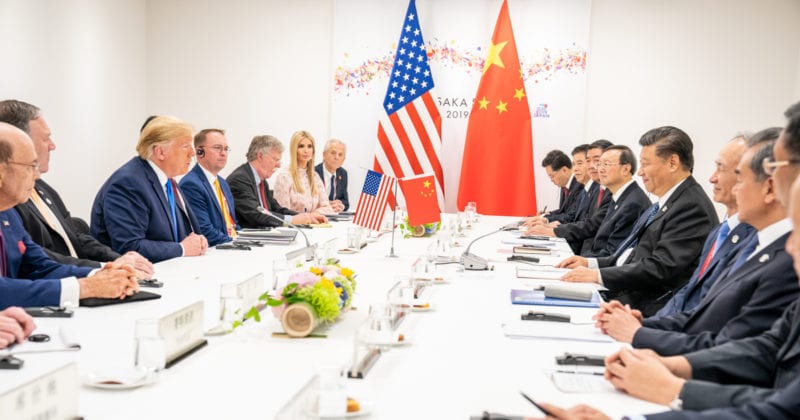What Is a Tariff and How Does It Work? in the intricate world of global trade, a multitude of terms and concepts govern the exchange of goods and services across borders. One of the most important, yet frequently misunderstood, terms in this domain is What is Tariff. Tariffs play a pivotal role in shaping the economic landscape of countries, influencing everything from trade relations to the price of everyday consumer goods. In this article, we will dive deep into the concept of tariffs, explore how they function, and examine their wide-reaching impacts on international trade and local economies.
:max_bytes(150000):strip_icc()/GettyImages-1328832142-68a8d5c0975449529757970c3e92fc7a.jpg)
Understanding the Basics of a Tariff
At its core, a What is Tariff is a tax imposed by a government on imported or exported goods. The purpose of a tariff is multifaceted. It can protect domestic industries from foreign competition, generate government revenue, or serve as a strategic tool in international trade negotiations. Tariffs are applied to specific categories of goods, and their rates can vary based on the product’s country of origin, value, or nature.
A Brief History of Tariffs
The concept of tariffs has existed for centuries. Historically, tariffs were primarily used as a source of revenue for monarchies and later for emerging nations. The Industrial Revolution brought about significant changes to international trade. As nations became more interconnected, tariffs began to evolve into tools not just for revenue generation but for regulating trade. By the late 19th and early 20th centuries, tariffs were central to debates on free trade versus protectionism. Fast forward to today, and tariffs remain as relevant as ever, albeit with more complex structures.
Types of Tariffs
There are several different types of tariffs, each serving a unique purpose. Understanding these variations helps clarify the ways in which tariffs influence global trade.
1. Ad Valorem Tariffs
One of the most common types, ad valorem tariffs, is calculated as a percentage of the total value of the imported goods. For example, a country may impose a 10% ad valorem tariff on automobiles. If an imported car is worth $30,000, the tariff would amount to $3,000. These tariffs are often used because they are straightforward to calculate and adjust over time as the value of goods fluctuates.
2. Specific Tariffs
Unlike ad valorem tariffs, which are based on the value of goods, specific tariffs are fixed fees imposed on a particular quantity or weight of goods. For example, a country may impose a specific tariff of $5 per unit on imported electronics. This type of tariff is particularly common for commodities such as raw materials or agricultural products, where the pricing structure is less subject to fluctuation.
3. Compound Tariffs
As the name suggests, compound tariffs combine both ad valorem and specific tariffs. A compound tariff may involve a percentage of the product’s value and an additional fixed amount based on its quantity. These tariffs are often used to address the nuances of complex trade relationships.
4. Anti-Dumping Tariffs
Anti-dumping tariffs are applied when a country believes that another nation is “dumping” goods into its market at artificially low prices, often below the cost of production. This practice is considered unfair because it can harm domestic industries and disrupt market equilibrium. Anti-dumping tariffs aim to level the playing field by raising the cost of these goods to fair market value.
Why Do Governments Impose Tariffs?
Tariffs can serve various strategic purposes for governments. Understanding why a country might decide to impose tariffs is key to grasping the broader implications of global trade policy.
1. Protecting Domestic Industries
One of the primary reasons governments impose tariffs is to protect domestic industries from foreign competition. By increasing the cost of imported goods, tariffs make locally-produced items more attractive to consumers. This protectionist approach is particularly important for industries that are considered vital to a nation’s economy, such as steel production, agriculture, and manufacturing.
2. Generating Revenue
Tariffs can also serve as a direct source of revenue for governments. This is especially true for developing countries that may not have robust tax systems or other revenue-generating mechanisms in place. By levying tariffs on imports, governments can earn money that can then be reinvested into public services and infrastructure.
3. Influencing Trade Relations
In addition to economic motives, tariffs are often used as a diplomatic tool. Governments may use tariffs to encourage or discourage trade relations with specific countries. For example, a country might impose tariffs on another nation’s goods in retaliation for perceived unfair trade practices, or as leverage in trade negotiations.
4. Ensuring National Security
Some tariffs are designed with national security in mind. Certain industries, such as defense manufacturing or energy production, are deemed critical to a nation’s security. Governments may impose tariffs to ensure that these industries are shielded from foreign competition and remain robust in times of geopolitical uncertainty.
How Do Tariffs Affect Consumers?
While tariffs are often seen as tools for governments to regulate trade, they also have a profound impact on consumers. One of the most visible effects of tariffs is on the prices of goods. When a tariff is imposed on an imported product, the cost of that product generally increases. This is because businesses that import goods often pass the additional costs onto consumers. Let’s take a closer look at the direct effects of tariffs on consumers:
1. Higher Prices
As mentioned, the most immediate impact of tariffs is an increase in prices. Imported goods become more expensive because the tariff is added to the final price. For example, if a country imposes a 25% tariff on imported clothing, consumers will likely see a rise in the prices of their favorite brands. This can lead to higher overall living costs, particularly if the tariffs target essential goods.
2. Limited Choices
Tariffs can limit the variety of products available to consumers. When the cost of importing goods becomes too high, businesses may choose to source domestically-produced alternatives, which could be fewer in number or of lower quality. This reduces the options available for consumers and can diminish competition in the market.
3. Impact on Innovation
Higher tariffs can stifle innovation in certain sectors. When companies face higher costs for importing raw materials or finished goods, they may be less likely to invest in new technologies or product development. This is particularly true in industries where global supply chains play a critical role in research and development.
The Global Impact of Tariffs
Tariffs not only affect the countries imposing them but also have wide-reaching effects on the global economy. When one country imposes tariffs, it often leads to retaliatory actions by other countries, creating a cycle of protectionism and trade disputes.
1. Trade Wars
The imposition of tariffs can sometimes lead to trade wars, where countries engage in a back-and-forth escalation of tariff rates. Trade wars can have serious consequences, slowing down economic growth, increasing the prices of goods, and reducing overall global trade. The ongoing trade war between the United States and China is one of the most significant examples of how tariffs can escalate into a larger international dispute.
2. Global Supply Chains
Modern global supply chains are built on the premise of free trade and minimal tariffs. When tariffs are imposed, they can disrupt these supply chains, leading to delays, higher costs, and inefficiencies. Manufacturers that rely on international suppliers for components may find it difficult to maintain profitability when tariffs increase their expenses.
3. Economic Growth
Tariffs can have a mixed impact on economic growth. On one hand, they may protect domestic industries in the short term. On the other hand, they can hinder the overall growth of the global economy by reducing trade and increasing production costs. Economists generally agree that free trade tends to foster economic growth, while protectionism through tariffs can have negative long-term consequences.
In the ever-evolving world of global trade, the concept of What is Tariff remains crucial for understanding how countries interact with one another in the economic arena. Tariffs are used for a variety of purposes, from protecting domestic industries to generating revenue for governments. While they can provide short-term benefits, the long-term effects of tariffs, especially in the context of global supply chains and trade relations, are complex and far-reaching.
Consumers, businesses, and governments alike must understand the multifaceted role tariffs play in shaping economic policies and trade agreements. Whether it’s the cost of a product at the store or the international relations between powerful economies, tariffs are far more than just taxes—they are a critical component of modern global trade.







